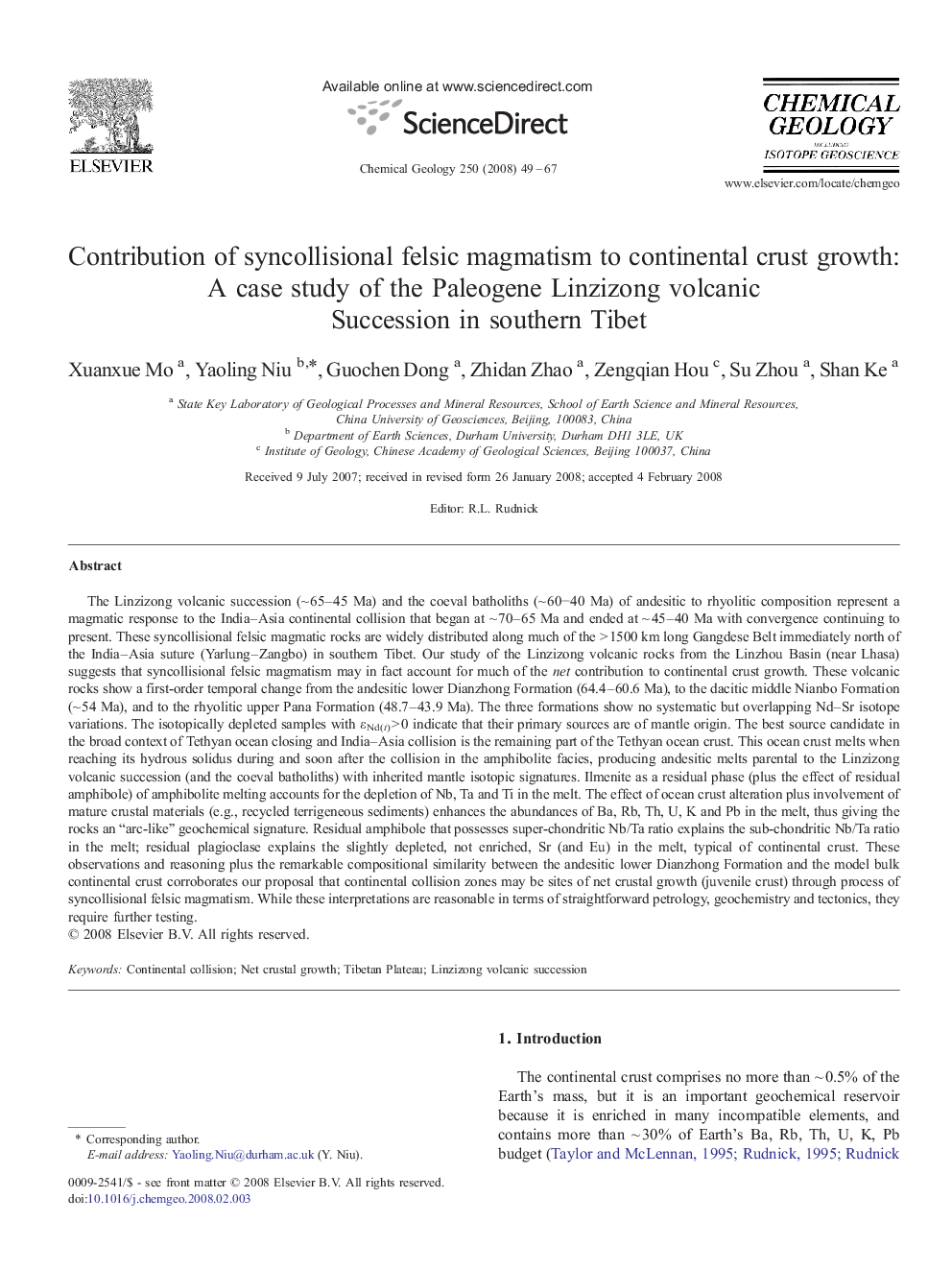| کد مقاله | کد نشریه | سال انتشار | مقاله انگلیسی | نسخه تمام متن |
|---|---|---|---|---|
| 4700808 | 1637730 | 2008 | 19 صفحه PDF | دانلود رایگان |

The Linzizong volcanic succession (~ 65–45 Ma) and the coeval batholiths (~ 60−40 Ma) of andesitic to rhyolitic composition represent a magmatic response to the India–Asia continental collision that began at ~ 70–65 Ma and ended at ~ 45–40 Ma with convergence continuing to present. These syncollisional felsic magmatic rocks are widely distributed along much of the > 1500 km long Gangdese Belt immediately north of the India–Asia suture (Yarlung–Zangbo) in southern Tibet. Our study of the Linzizong volcanic rocks from the Linzhou Basin (near Lhasa) suggests that syncollisional felsic magmatism may in fact account for much of the net contribution to continental crust growth. These volcanic rocks show a first-order temporal change from the andesitic lower Dianzhong Formation (64.4–60.6 Ma), to the dacitic middle Nianbo Formation (~ 54 Ma), and to the rhyolitic upper Pana Formation (48.7–43.9 Ma). The three formations show no systematic but overlapping Nd–Sr isotope variations. The isotopically depleted samples with εNd(t) > 0 indicate that their primary sources are of mantle origin. The best source candidate in the broad context of Tethyan ocean closing and India–Asia collision is the remaining part of the Tethyan ocean crust. This ocean crust melts when reaching its hydrous solidus during and soon after the collision in the amphibolite facies, producing andesitic melts parental to the Linzizong volcanic succession (and the coeval batholiths) with inherited mantle isotopic signatures. Ilmenite as a residual phase (plus the effect of residual amphibole) of amphibolite melting accounts for the depletion of Nb, Ta and Ti in the melt. The effect of ocean crust alteration plus involvement of mature crustal materials (e.g., recycled terrigeneous sediments) enhances the abundances of Ba, Rb, Th, U, K and Pb in the melt, thus giving the rocks an “arc-like” geochemical signature. Residual amphibole that possesses super-chondritic Nb/Ta ratio explains the sub-chondritic Nb/Ta ratio in the melt; residual plagioclase explains the slightly depleted, not enriched, Sr (and Eu) in the melt, typical of continental crust. These observations and reasoning plus the remarkable compositional similarity between the andesitic lower Dianzhong Formation and the model bulk continental crust corroborates our proposal that continental collision zones may be sites of net crustal growth (juvenile crust) through process of syncollisional felsic magmatism. While these interpretations are reasonable in terms of straightforward petrology, geochemistry and tectonics, they require further testing.
Journal: Chemical Geology - Volume 250, Issues 1–4, 1 May 2008, Pages 49–67